A small side project I’m working on to grow 1000 tress from seed and plant them over the next 5–10 years. It sounds a lot but it’s not. You could hold 1000 acorns in a small carrier bag. Growing them takes up little space but bringing them to a stage where they can be planted out will take a bit more room and some cooperation from local land owners.
Watching a small acorn push a green shoot through the soil and begin a 600 year story is quite an experience - an incredibly empowering and humbling experience.
I’ve been growing trees on and off for the last 30 years. Not in any great amount but if I’m somewhere and see a few acorns lying about I’ll put them in my pocket and push them into a pot when I get home. When I got married we planted a tree I’d grown from seed. It’s about 10 metres tall now.
Just through the Brandenburg Gate in Berlin is the Tiergarten - Berlin’s largest park with avenues of Oak trees. I was there around 2005 in autumn and it must have been a mast year as I was ankle deep in acorns. I put about 20 in my pocket and brought them home. That produced 6 really vigorous oaks that I later donated to a few neighbours - one of whom coincidentally had a grandfather from Berlin, he was particularly chuffed.
Another thing I’d like to do is to be able to post a tree to someone. Not a sapling but just the germinated seed. The potential of a tree. Watching a small acorn push a green shoot through the soil and begin a 600 year story is quite an experience - a incredible empowering and humbling experience.
So for the next few weeks I’m experimenting with a few ways to germinate seed. I’ve placed 50 in a biodegradable bag with some well rotted horse manure. In a few egg boxes I’ve compressed another 50 into hose manure in the cover. Another 30 or so in toilet roll tubes.
Once germinated I’ll test another batch of toilet roll tubes as a way to package and post. I’m expecting the cardboard to disintegrate fairly quickly but this will be a test to see how long it takes to deliver v disintegrate.
I have a few colleagues who work in London, Edinburgh and North Wales. The plan is to experiment with posting over something that can be placed directly into a pot. An acorn within an acorn.
Week 1: 28/3/20
Germination.
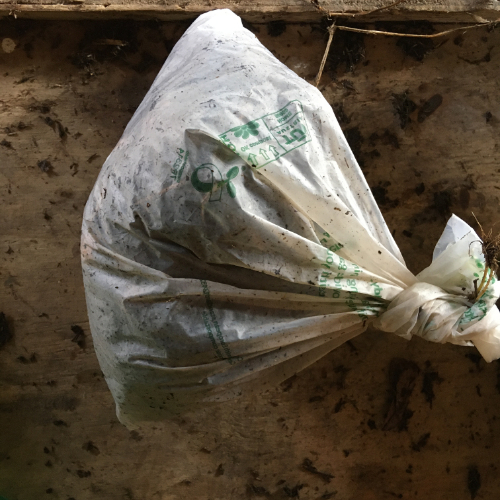

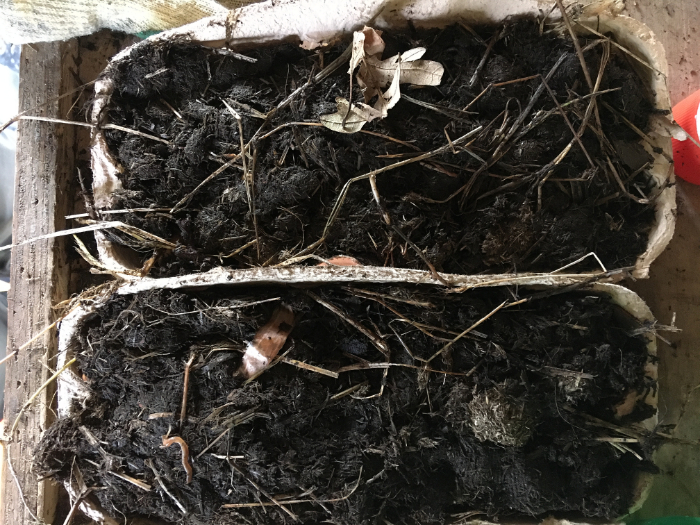
Did I say that out loud? I certainly didn’t when I was at secondary school staring at the letters A, C, D & C freshly carved into the wooden desk next to me, with bare fingernails. It’s alright being an individual but in some instances you’re much better blending in.
They had all the logos, the t-shirts, the mullets, the denim jackets, the patches.
I was 13 and my English teacher asked a packed class, "who likes Jazz?" and went on to describe the intense pleasure of placing the needle on a Billy Holiday record, opening a bottle of wine and getting smashed. I got it instantly and immediately wanted to stick my hand up, to "come out" in some musical sense.
Now, if he'd been some roguish Sam Shepard type of literary figure, I might have thrown my lot in with him.
However, he was a Mr Bean type literary figure. I weighed up my options and instead threw him under the bus.
However, to this day I remember the desire to raise my hand, stand tall and say “I like jazz - who the fuck wants some!!??”
But it didn't happen. The mob won.
Looking back I realise what the real problem was.
They had all the stuff, the logos, the t-shirts, the mullets, the denim jackets, the patches.
I had nothing. I couldn't pin a badge on or draw a logo on a copy book to subtly signal my love for the dominant seventh flat five.
At that stage my only option was to stand up in class and confess to it in some sort of soviet show trial.
Years later I eventually found the only other person in town who liked jazz.
I made some merch, a pin badge of Miles Davis' On the Corner cover cut out from a review in The Wire magazine.
I wore it into into a pub in town one night.
Iggy Beattie, prog rock aficionado, came up and offered me £1 for it. He too had a secret love for the jazz. I gave it to him.
It turned out I had Bitches Brew, he had In a Silent Way… the mix tapes flowed.
About 5 years later I was at a gig at the Queen‘s University Arts Festival.
They had a jazz festival - one of the best in Europe at the time.
The venue was known as the Guinness Spot (John Scofield named a song after it).
The band was Stan Tracey's Hexad. I think it was £3 in (Pete King was on Alto).
There was the English teacher - left of the stage. He spotted me and came over during a break.
"I never knew you liked Jazz" he said.
"You never asked" I said.
So I‘ve made the perfect t-shirt for the closet jazz lover. The t-shirt I needed when I was 13.
To the mob it just looks like an accountancy firm.
To those in the know it's got jazz written all over it.
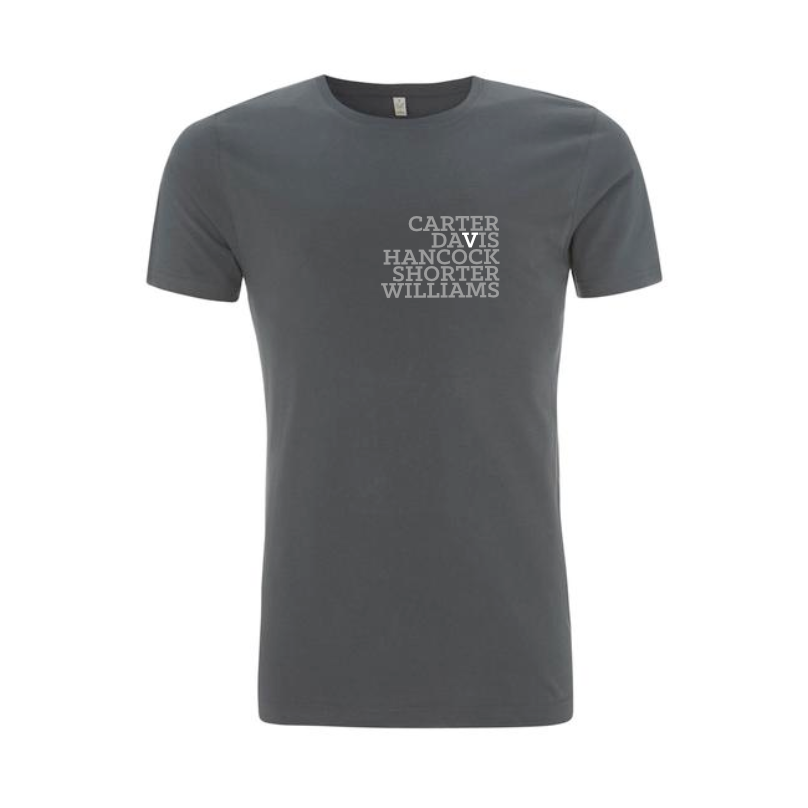
Miles Davis' 2nd great quartet
Trawl for the best protest songs of all time and chances are you’ll not find one Fela Kuti song. A search for the best political musicians of all time returns a long list of musicians not fit to brush Fela’s fur coat.
…you'll find a long list of people not fit to brush Fela’s fur coat.
I’ve been obsessed with Fela Kuti since I first saw him on The Tube back in the 1980s when I was about 14 - wearing a fur coat and probably nothing else but speedos (him - not me). Having no money - it was straight to the library the following Monday to look for some Fela music. They had one tape - Fela live with Ginger Baker (Black Man’s Cry NEVER fails)… and so began a life long obsession.
I used to play Fela Kuti LPs before we went on stage back in the 90s. I remember putting on Coffin for Head of State. A bunch of people got up and started dancing. A girl came over and asked what he was singing about. I said “he’s singing about his mother getting thrown out of her bedroom window by the army and subsequently dying” - “You’re joking - right?”.
That’s the power in his music. It uplifts, it empowers, it inspires. It never preaches. His music is satirical.
He poked fun and burst bubbles. He gave ordinary Nigerians a chance to laugh and sing about the corruption the lived among.
Poking fun and bursting bubbles in a democracy is easy.
Poking fun and bursting bubbles in a military dictatorship is about as ballsy as it gets.
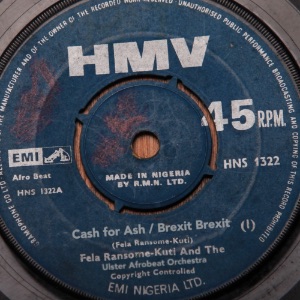
We need an Ulster Afrobeat Orchestra right now - to poke fun and burst bubbles.
The list of song titles and source material is endless.
Auditions begin in Spring 2020
Fela Kuti single, Brexit Brexit
Trapper John: Look, mother, I want to go to work in one hour. We are the Pros from Dover and we figure to crack this kid's chest and get out to the golf course before it gets dark. call the kitchen and have them rustle us up some lunch. Ham and eggs will be all right. Steak would be even better. And then give me at least ONE nurse who knows how to work in close without getting her tits in my way.
Nurse: How do you want your steak cooked?
DIAGNOSIS: The Big C (Congestion)
We talk of cities in personal/human terms. They’re the ‘beating heart’ of an economy. Cities have financial ‘nerve-centres’. We talk of ‘arterial routes’ into the city. They have a ‘circulation’ of people and traffic. People are seen as the ‘life-blood’ of a city. When people can flow freely they work more efficiently, spend more, exercise more, live better and the city thrives. When people stop flowing a city get’s fat, slow, stressed, congested, clogged, polluted & angry until it eventually starts… to… grind… to… a… STOP!
When the Pros from Dover arrive you know you’re in trouble. They’re the guys you call when the patient’s about to check out. They’ll cut off a limb or remove an organ, scrub up and go golfing because it’s not their problem - it’s yours. They’re in control because you lost control and they’re gonna crack your chest and be out on the golf course before it gets dark.
Belfast is the patient and it get’s its chest cracked open roughly every 10 years and the Pros from Dover are the road builders. The diagnosis is always congestion. The patient always opts for major surgery. It got itself into this situation by not reducing car use, not improving public transport and not taking regular exercise. It wouldn’t take the medicine and it’s gonna get its chest cracked open again and it’s never pretty. This isn’t keyhole surgery, it’s major surgery, it leaves massive scars, takes years to recover and chances are it won’t work.
PRESCRIPTION: Car implants
Here’s a reminder about how major the surgery can be. Go back in the 1960s when Belfast elected for cars implants as the best way to circulate people. The consultants advised encircling Belfast in a network of motorways. (Only a portion of the original plans were implemented). The road builders cracked open the docks area, removed 5000 people from Sailortown and implanted the M2. A community was broadcast throughout greater Belfast and their houses bulldozed. A perfectly healthy, functioning limb amputated to make way for a prosthetic motorway.
The Sailortown community blame politicians (the Belfast Corporation) and their own lack of political savvy but never pinned the blame squarely on a rising car culture. The only finger pointing is the artwork on the concrete pillars of the M3 flyover, old photographs of Sailortown framed in rear view mirrors. Sailortown is now essentially a series of public and private surface car parks along and between Corporation St. and York Rd. topped with a 4 lane flyover.
Some of the displaced community were moved into multi-storey buildings in the New Lodge overlooking Sailortown. It must be hard looking down to where your family house once was and see 2-3 parking bays in its place. It’s an upside-down world where we demolished houses for surface car parks and then placed the community in multi-storey accommodation. Incidentally, there are more trees planted and more green spaces in and around the car parks in Sailortown (Clarendon Dock/Corporation St) than the whole of the New Lodge.
I’m not doubting the need for the M1, M2 & M3 but I doubt the destruction of Sailortown would be acceptable now. There were probably alternatives.
MEDICAL HISTORY
Since then Belfast has had its chest cracked open roughly every 10 years. That’s about the time it takes for the politicians to dodge the tough decisions, funding to become available and the driving public to forget the chaos caused by the last major surgery. The Westlink in the 80s was only a stop gap. In the early 2000s the road builders put in stents by widening it (increasing 2 lanes to 3 by stealing a hard shoulder and narrowing the lanes), hoping they would clear out the fatty deposits by increasing the flow. They didn’t. They dug it all up and put in a new tunnel with balls on top in 2008. But it was never going to cure inner-city congestion and it didn’t. Belfast is once again the most congested city in the UK. The 18th most congested city in the World. It’s calling in the surgeons again.
The M1, M2 and M3 effectively diverts an increasing amount of traffic from the city centre. They increase the flow around the outskirts of the city but the major side-effect is the funnelling of an ever growing number of cars into the same limited city-space. We keep widening the neck of the funnel but we can’t increase the size of the bottle. The flow of cars into the funnel isn’t constant and steady either, it’s a massive adrenaline rush once in the morning and once in the evening from Monday to Friday putting the whole system into shock.
CONGESTION AWARENESS CAMPAIGN
When I was young we didn’t talk about Caner. It was a disease with no cure. If we didn’t talk about it might go away. It was always referred to as “The Big C”. Cancer Awareness Campaigns lowered anxiety levels and gave us a way to talk openly about the disease leading to greater awareness and an ability to identify the symptoms and practice prevention.
The Big C now seems to be “Congestion”. We’re certainly not talking about it and it’s certainly not going away. Our political leaders aren’t talking about it yet the air we breath gets more toxic and society less active, more stressed and obese as a result. We can’t really tackle the problem until we have reasoned, grown-up discussions about it. Perhaps we need a Congestion Awareness Campaign?
We need to be able to talk about alternatives. To talk about public and private businesses adopting co-ordinated ‘travel plans’ to create a smaller, steadier, more predictable flow of people (and cars) throughout the day. We need to rethink public and private parking and talk about freeing up the space it currently occupies. We need to divert spending from roads and talk about sustainable transport. We need to talk about building places where people can live, work, socialise and raise a family without the need for a car. We designed ourselves into this situation and we can design ourselves out of it when we start focusing on people not cars.
PEOPLE OR CARS?
After 40 years of rib cracking Belfast has failed to crack car congestion. The surgery hasn’t worked. Cardiac arrest is now a regular symptom. Belfast has to decide if it wants to prioritise the health and well being of people or keep injecting cars into every artery, vein and capillary of the city.
Does it want a city where walking and cycling is a real, viable, safe alternative… or not? Does it want a city where children and disabled citizens can move around the city safely… or not? Does it want to plant trees and create green spaces for people… or cars. Does it want to create a city where public transport is the fastest, cleanest, cheapest way of getting about… or not? Does it want a city where people can live, work and raise a family without the need for a car… or not? Does it want to elect politicians to make tough decisions and talk about the issues… or kick the can up the road for another 10 years. The medicine is relatively cheap but the politics are never easy. That’s the challenge not only for Belfast but for every large town across the country.
While we ponder all that, The Pros from Dover are packing their clubs, they’re most likely heading for York Street and they’ll want that steak well done.
This was first published on the Bikefast blog in March 2017.
Elliot Gould and Donald Sutherland, M*A*S*H
For the past 4 seasons I've pulled out the Cross bike and thrown myself into a couple of B races during the season. The results are always identical - I get pummelled in the 1st race and improve a bit in the second race before packing it after the 3rd, promising to give it a better go next year.
As a result the only thing I find missing at cross races are large egos… and I quite like that.
I always start too late, everyone’s had 3-4 races under the belt and it’s a tall order not to get lapped let alone finish. This year (2015) I had a plan - a ropey plan but it’s a plan none the less.
Here it is:
- put in some off-road “training” over September.
- enter all the races I’m fit to ride.
- finish all races AND without getting lapped.
- get gridded at least once.
- aim to finish a race in the top 20 toward the end of the season.
- enter the Ulster Championships and not make a tit of myself.
Here’s what I’m starting out with. I know there’ll be additions.
GEAR: Lake MX330 shoes, light full finger gloves, base layer and club kit, few caps, 3 changes of clothes (warm up, race, dry change), baby wipes, towel, 2 litres of water (washing),
BIKE: Kinesis Crosslight 5T frame, Ambrosio Excellence rims and Zenith hubs, 32mm Michelin Mud 2 tyres, Tektro Oryx Brakes + Rim Wrangler pads, 9 speed Ultegra bits and bobs. 46 x 36 chainset. Cheap SPD pedals.
The bike was put together over a winter a few years ago from odds and ends lying about the shed. The only thing really CX specific is the frame and tyres. (see costs at end)
I’ve documented each race, what each course was like, what I learned and what progress I made and what I can take into the next race and next season if I’m still about. I’ve scored speed/mud out of a combined total of 10. The muddier the course the lower the speed and v.v. “Technical” refers to the amount of off-road “skill” required - 10 for break-neck technical - 1 for no real off-road skill required. Tyre pressures are recorded along with position and points awarded. Points are awarded for top 30 places which keeps it interesting and competitive.
CX Diary, 2015
Pre season
I can’t ride off-road for shit. I like the idea of it but in practice I’m too timid. I ride off road like I ride on-road, trying to avoiding twigs, holes, stones… everything that looks slightly dangerous. I need to be able to ride in a straight line over everything. With no real dedicated off-road course locally (or anywhere for that matter) I use Peatlands Park a few miles from the house.
The goal here is to get used to riding a mix of terrain - and more importantly to do it at speed. Peatlands is essentially a park built on a peat bog with single track, bark paths, grass, lots of shin-deep leg sapping muck. There are bits where the bike has to be carried, lots of roots - essentially it’s got it all, in abundance.
There’s a 10km trail looping around the outskirts of the park - roughly the length of an average race. Takes around 45 minutes to cover it all. It’s ideal CX terrain. I’ve put in 3 sessions per week over September in the run up to the 1st race. Let’s see if there’s any payback.
Round 1: Lurgan Park
It seems a lot of people have also made plans. 1st race of the season usually attracts 30-40 riders. 100 have entered for Lurgan park. With no gridding all 100 riders are stretched across the park in one long line waiting for the gun. Think of the battle scenes of Braveheart mixed with the chariot race of Ben Hur and you’re close. The 1st corner ramps up to a section of banks and planks - it takes 1 minute for everyone to file through this section. Chaos but brilliant.
Speed: 8 - the course was fast, not necessarily me.
Mud: 2 - firm flowing course with some brutally tough switch backs on a steep bank at the back of the park.
Technical: 2 - nothing that called for much off road ‘skill’. A quick down ramp saw a lot of riders separated from their bikes at speed and with a fair bit of altitude.
PSI: 35 x 2 (could increase this to 40, 42 as course was firm)
Position: 46/100
Points: 1 (for finishing)
What I learned: Brutally hard from the off - nothing really prepares you. Pre race training helps - a lot. Finished without getting lapped. That’s one box ticked. Still not near fit enough. Skills nowhere near good enough but a massive improvement from last year.
Verdict: happy with that.
Upgrades: bike held up OK.
I’ve started training with the Island Wheelers in Windmill Wood on Thursdays - it’s a tough technical course that appears in Round 3.
Strava
Flickr
Phoenix Trofee:
Not a race I was looking forward to. I’ve seen races here before and they always look tough. Lots of off-camber corners with photographers (vultures).
A good splash of rain on race day meant it got slippy but not sloppy. The lack of a MTB race meant it didn’t get too cut up either
Sand featured heavily with 10-15m sand pit followed by a section of steps. I could hear my rims grind down to the tubes everytime I touched the brakes. Clipping back in was impossible. Fell on 1st lap and lost 10 places instantly but managed to claw them all back eventually. It’s a rooty gnarly course in and around the start/finish area where lots of riders came off.
Speed: 5
Mud: 5
Technical: 5
PSI: 35 x 2
Position: 37/90
Points: none (separate competition not part of the league).
What I learned: good brakes mean you hold your speed and can brake late. I’m braking too early and scrubbing off too much speed into corners because I’ve shit brakes. 1 second a corner probably equates to 60 seconds per lap. That’s a lot of time. Sand needs power, steady, high cadence and a good deep furrow - managed OK.
Verdict: Happy with that - great racing and course. Atmosphere always brill on this course.
Upgrades: brakes need looking at. Ordered CX90 Cantis with some Koolstop Dura Pads. £60
Strava
Round 2: Necarne, Irvinestown
Bit of a trek up here today but a fantastic looking circuit, it’s dry if a bit cool. Didn’t fit brakes - not before a race day. So riding with practically no brakes - a firm, flat(ish) course meant brakes weren’t a major issue (apart from break-neck bank). Strange surface through horse arena and also a dozen steps to hawk the bike up. Looked bad but rode fine. Great twisty section in front of House to the finish - in the wet it would be a completely different course.
Speed: 9
Mud: 1
Technical: 3 - firm and fast.
PSI: 40 x 2
Position: 27/80
Points: 5
What I learned: Tighten cleats regularly - right cleat came loose and couldn’t clip out or clip in at will. A real pain.
Verdict: Got my first gridding of the year! That’s another box ticked. Remember to take your feckin’ scarf off before the race (Boilin’). CX starts are possibly the most chaotic thing you may ever experience on a bike - play the hand you’re dealt, try and hold your position as there’s always opportunity to move up during the race. Recognise your own race early and get stuck in - play to your strengths. Great race - right to the finish. Some superb battles right throughout the race. Inching closer. Picked up points too!!! (top 30). Equipment does take a bit of a severe beating from race to race - need to keep on top of it all.
Upgrades: bike held up OK but brakes need changed ASAP. My bars are shit - not compact enough. 100% riding on the hoods can be a bit sapping.
Strava
Flickr
Round 4: Windmill Wood, Dungannon
a place I grew up in and know well. Raced here a few times and died a horrible death each time. Brutally hard course - probably the toughest and most technical of the whole series. Practiced the new course in the weeks leading up to the race. Quietly confident about getting close to that top 20 place early in the season as I can see technique improving slowly. This course is out to stop you - loads of options to lose time, fall and banjax yourself and the bike. It’s a course that favours really good technique as opposed to brute force and power but brute force and power is needed as it’s deceptively hilly.
Speed: 6
Mud: 4
Technical: 8
PSI: 40 f 35 r (found tyre was rolling off front when coming at angle onto tarmac)
Position: DNF/80 - calf strain on 1st running section. Thought it would ride out. Got worse on lap 2. Bailed after lap 3.
Points: 0
What I learned: never be quietly confident. Warm up off the bike as well as on. Stretch everything well before the race. Should have fitted studs for the running section - a slip probably caused the strain. Get in the car and go straight home - not finishing isn’t worth sharing with anyone.
Upgrades: Brakes worked great - if noisy as hell. Front brake squealing like an intercity express train. New bars (from the shed) and bar tape, £10. New bars are just as bad as the old ones, I can see more money spent in the coming weeks. Pedals also need looking at - mud clearance is a factor. On 2nd lap I couldn’t get clipped back in and lost 5 places easily. M PD9000 - £60
Verdict:shite, shite and more shite! Pulled calf muscle doesn’t bode well for following weekend. Feet up and see how it goes midweek.
Strava
Flickr
Round 4: Seapark, Larne
Position: DNS: the calf pull didn’t heal in time.
What I did: A light cycle on the Wednesday went OK. Did some offroad stuff on Thursday - went OK. New pedals feel so superior - incredibly so. Equipment is a major factor compared to road cycling. Flatted after 2 miles on Friday and walked back. Calf held up OK. Did small kids cycle on Sat and thought - “I’ll give this a good test” out of the saddle, pulled up and it snapped again. Sat spent with ice and leg elevated. Square one. I’ll be missing round 5 too. Need to keep up longer cycles and introduce running early in the Sept. That’s 3 races lost on account of a poor warm up! Big lesson there. STRETCH STRETCH STRETCH and light running earlier in the year.
Flickr
Round 5: Bangor
All that was missing form this course was a diving board.
Position: DNS. Calf not great. Few small tests off the bike.
Upgrades: New loofah for the shower (£5) - best upgrade all year: Bottom bracket gone £25 : £25 Ambrosio Wheel Equilibrator (brass plate) £12!! FFS! Tighten everything.
Flickr
Round 6: Craigavon
Lots of stretching before leaving the house. Did a good warm up with lots of running. Felt slow but confident I could finish at least.
Mud bath of a course with lots of running. Uphills were unrideable - put the calf to a good test. 6th row on grid, that was a huge advantage! Started very sluggish. Fitness totally gone, spat out the back immediately but picked up the pace after the first lap. The back section of the course was firm and give good opportunity to start moving a few places through the field. HR got up and going eventually and I felt good enough to finish top half at least.
Avoided the steps on the second lap by taking the bank to the side - pinched a kerb and flatted instantly. Went straight to the car!
Speed: 3
Mud: 7
Technical: 5
PSI: 40 f 35 r (more pressure in rear would have stopped flat - but needed for mud).
Position: DNF/70 - flat.
Points: 0
What I learned: definitely get stuck back in - as all interest had almost completely gone. Lack of fitness means nothing goes smoothly. Leg held up which was the biggest plus. Stick to the course and don’t be a smart arse. One mistake and it’s all over. Set of tubs would not have pinched flat but I’d still have made a mess of it somewhere along the line. Back on track anyway. Fitness is like a game of poker, the chips are hard won but very easily lost.
Verdict: Disappointed not to finish or get more of a race but happy to be back at it.
Upgrades: new tube. £5.
Strava
Flickr
Round 7: Ormeau Park, Belfast
So after 4 weeks of limping, DNFs and DNSs I’m off to Belfast and Ormeau Park and expecting a damn good kicking. A new course this year with less single track and more open grass areas. The amount of rain falling this season has seen conditions getting heavier and heavier each week. The course was certainly on a par as most technical so far - lots of corners, break-neck descents, climbing, running and muck. No real opportunities for stupid mistakes.
Tried to make up for lack of fitness by being a smart arse (again) and cutting corners, avoiding running and in the process falling over, riding into bushes, getting tape wrapped around things and being incredibly shit. As with the previous week when you try and be a smart arse things go wrong. Early on it was plain to see that riders who i was competing with 4 weeks ago are now 10-15 places ahead. If there was any doubt about the benefits of riding CX - they were plain to see. I got a damn good kicking. I enjoyed every second of it.
Speed: 3
Mud: 7 - this was more like plasticine than mud - straight out of the River Lagan. The bike ground to a halt on a number of occasions.
Technical: 8
PSI: 40 f 40
Position: 49/87 (Lapped! FFS!)
Points: 1 (for finishing)
What I learned: I learned that I was pure shite, that a few weeks without a full race sets you back more than a few weeks. Getting frustrated doesn’t help - just need to accept what’s in front of you and deal with it honestly. There are life lessons there too.
Verdict: Disappointed to get lapped but better than last week - that’ll do.
Strava
Flickr
Round 8: St. Colum’s Park, Derry
Weighed this up for a few days as it’s long oul trek up to Derry and the conditions (rain, rain, rain) hadn’t improved all week. I was fit to ride so I stuck with the pre season plan and packed up and set off early. The rain was coming in sideways over Glenshane with waterfalls springing out through every gap in the hedge.
Probably the best flowing course all season - up there with Necarne. Tough as hell. Long flat sections broken up with seriously steep down sections and uphills, massive off camber banks and a lap of the the all weather track to finish. Tons of opportunity to kill yourself. However with improving technique and fitness everything was rideable which made for a great, hard fought race. Still way, way behind the guys I was mixing it with at the start of the season. Calf went again on the run!
Speed: 6
Mud: 4
Technical: 7
Position: 20/33
Points: 10
What I learned: stick to the pre season plan - in my case “go to every race you’re fit to ride”. Support the race organisers as they put a huge amount of effort in and deserve the satisfaction of seeing people out there racing. Got that top 20 that I’d been aiming for so well worth the trip but more importantly it was a great day out on a great course with great individual battles. I need to start running again - that needs serious attention next season.
Verdict: Great day out, great course, great race, great finish and in the top 20, even though there was a small field.
Strava
Flickr
Round 9: Falls Park, Belfast
Lots of talk from previous season about how good a course this was with many pushing it for the Provincial championships or even Nationals. The course had the potential to be fantastic but for a rider of such shit ability and fitness this was going to be a challenge. The relentless rain over the past few weeks had turned half the course into a thick, ankle deep soup of thick muck with the second half a blanket of leaves. The race is named “the race of the fallen leaves” - they were all stuck to me and the bike at the finish - It was like getting tarred and feathered. I knew I was fecked from the start so I reset the goal to (a) finishing and (b) not getting lapped.
Speed: 1
Mud: 9
Technical: 3
Position: 41/60
Points: 1
What I learned: I now know why you need a second bike. Not getting lapped by fellas with 2 bikes and a team in the pits was a result for me. - I know what a really, really muddy course feels like to race in. The car wash at the BP Petrol Station opposite the course was choc-full of bikes getting hosed down afterward! If things are going shit, just readjust your goal - never bail out. You need to be able to run - on a course like this it’s as important as riding. I devised a new mud rating for courses.
New Mud Rating: Weight of bike before race (9kg) - weight of bike after race + mud (13kg). Work out weight gained (4kg), expressed as a percentage. Falls had a mud rating of 44.4%. I had to go back and regrade all the previous races based on this course
 .
.
Verdict: I was pure balls on the Falls but was delighted to get the bell and finish.
Strava
Flickr
Ulster Champs: Maghera.
DNS - I pulled a muscle in my back the week before - ruled that race out. I went up and took some pics instead. It was a lot easier.
Here are the pics.
Conclusion: How did the pre-season check list go.
• put in some off-road training over September: Yes, this paid off but starting in June would be even better - especially if you’re not racing at open level, running, competing XC or Duathlon/Triathlon.
• enter as many races as I’m fit to ride: Yes - rode everything I was fit to ride.
• finish all races AND without getting lapped: No - lapped in Ormeau.
• get gridded at least once: Gridded in 4 races. Getting gridded doesn’t mean a great pile, it’s encouraging, indicates that you’re going in the right direction plus it’s a bit of banter getting your named called at the start line.
• aim to finish a race in the top 20 toward the end of the season: Yes - top 20 in Derry… Just!
•enter the Ulster Championships and not make a tit of myself: No - wasn’t fit to but did get some good pics.
Points Total: 18 (I shook up the world, I shook up the world!!!!!)
Cleaning the bike eventually becomes chore, especially when it takes longer than the race took.
So where now? I’m just going to mosey about the club rides for a bit and get some enthusiasm back again. You lose touch with the club very quickly but it takes little effort to hook back up and start enjoying the bike again. Spring will hopefully see the start of running. I need a better engine all round. A few duathlons wouldn’t do any harm. Club races should keep things ticking over and maybe a few open road races toward the end of the summer… but I doubt it - the interest really isn’t there. New bikes are always the answer to every ill. I’ve had 4 years out of my current frame and it owes me nothing. Hope to encourage a few more club members to line up next year as well - although having read this they might decide against it.
Things start again 1st March - starting with a re-read of this diary.
Entry Level Costs:
So how much would it cost to get into the sport - real entry level costs.
This includes the bike and the costs of racing a typical season.
Bike: I’d built the bike up in 2012 for about £350 from a 2nd Ebay frame + tyres, 9 speed bits + training wheels in the shed. I’m certainly no bike mechanic but try and bodge as much as I can to keep costs down plus it’s all good to know. I’ve learned that equipment is important, more so than on a road bike but only if you really want to compete - a mixed bag of odds and ends from the shed certainly doesn’t stop you entering a race and competing.
Race fees: 10 x £12 £120
Limited Competition License: £60
Upgrades: Brakes £60, tape £10, pedals £60, pads £10, Tubes £5 (£165), BB £25.
Total: Call it £350
So all in all about £700 in total… give or take - throw in £50 for diesel over the season
rounding it up to £750 in total.
Not bad for a good rideable bike that’ll do you for years and 3-4 months of brilliantly organised events, great atmosphere and competition.
Cyclocross is unique and it’s honest (apart from the odd motor here and there). To be a great cross rider you need superb bike handling, incredible power/fitness and good maintenance/knowledge/selection of your equipment - all 3. To win a road race you don’t necessarily need the bike handling or for that matter the quality equipment. There’s no “sitting on a wheel” or “finishing in the bunch”. It’s you against the course, first and foremost. There’s loads of shoulder to shoulder racing but take your eye off the course and it’s over in a fraction of a second. Times and positions are published so there’s no kidding yourself. There’s no “I rolled around in the bunch”, “I finished in the group” malarkey. Bail out, finish last, get lapped…. it’s all up there in black and white… second by second, lap by humiliating muddy lap… for everyone to see.
As a result the only thing I find missing at cross races are large egos… and I quite like that.
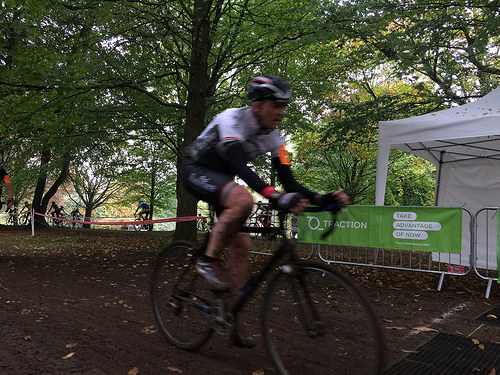
Me… going fast… in reverse.
The Phoenix Trofee, Lady Dixon Park, Belfast
"My cigarette is the mild cigarette, that's why Chesterfield is my favourite" - Ronald Regan
The density of the road network coupled with lower number of cars suddenly strikes an almost perfect balance.
I started smoking in 1986. I was 16. Everyone smoked. My Da smoked. All my teachers smoked - in class, constantly. At 16 you could bring a note from your parents giving you permission to smoke in school. Friends smoked, brother smoked, girlfriend smoked. I started work at 18 in a local newspaper, I smoked at my desk. I could smoke on the bus to work. I could smoke on a train. I could smoke in a plane. I could smoke in a hospital. I could smoke in a bar. I could smoke in a restaurant. I could smoke in McDonalds. The Embassy World Snooker Championship was on TV. Snooker players smoked. Darts players smoked. Footballers smoked in dugouts and managers smoked on the touchline. Marlboro hung over the gantries in F1 racing, JPS, Silk Cut and Benson & Hedges plastered the cars and the drivers.
In many ways I was lucky though, at the start of the 90s smoking culture began to be dismantled. It still took me another 10 years to quit though.
In the 25 years we've spent raising the bar on access and opportunity to tobacco we have lowered the bar on our access and opportunity to use cars. We now live in a society where it's almost seen as a human right to own a car. Easy finance and a saturated 2nd hand market mean it's not just one car, 2, 3 and 4 cars isn't uncommon in some households. In most schools, student cars now outnumber those of staff in the school car park. Vehicles once used by the military now drop children off to primary schools. Children don't play outside, instead they're driven to swimming clubs, football clubs, youth clubs and driven home again - ironically because the roads are now too dangerous for children to walk or cycle. In the same 25 years the simple VW golf has become twice as heavy, twice a powerful, considerably longer and wider. The new Mini is a mini in name only.
The right tool for the right job.
"City fathers have to choose. Cars or bicycles. And in Copenhagen they’ve gone for the bike.The upshot is a city that works. It’s pleasing to look at. It’s astonishingly quiet. It’s safe. And no one wastes half their life looking for a parking space. I’d live there in a heartbeat." - Jeremy Clarkson.
The car's a great thing. Covering long distances in short time they're an amazing invention. But they were never intended to solve the problem of short distances. They were invented to replace those long journeys where railways didn't run. Where horses still pulled carriages long distances. 100 years ago trams, buses, bikes and walking had solved the problem of transport in inner cities but somehow a car culture left unchecked has eroded these systems and turned all city and town centres into car parks and traffic jams. In a similar way car culture eroded a rural public transport system. The train network was scrapped 60 years ago and isn't coming back. We have a patchwork public transport network in rural areas - in rural communities the car is now essential.
The solution for transporting large volumes of people efficiently in inner cities is the same in 2013 as it was in 1913 - trams, buses, bikes and walking. In terms of efficiency, value for money, health benefits and environmental benefits there's a clear winner - the bike.
World class cycle infrastructure - free of charge.
“The world as we have created it is a process of our thinking. It cannot be changed without changing our thinking.” Albert Einstein.
The current demand is for a bridge across the Lagan to the Gasworks in Belfast. In Belfast there are currently 8 bridges across the river Lagan where cycling is possible. All along a relatively short stretch of river. Most have 2 lanes some have 4 lanes. All have footpaths. They're all fairly modern and well maintained. Why do we need another bridge solely for cyclists? Why can't we claim one of the existing bridges, or a lane or two at no cost? And while we're there a few of those minor roads, currently used as 'rat-runs' where a car has no business being. We can create dedicated cycle only roads in and out of the city linking up with Greenways, towpaths at no cost. The call for more 'cycle infrastructure" is always met with "we can't afford it". But we've already paid for it - it's all in place we simply need to shift our thinking on how we allocate it. Rather than continually calling for segregation of bikes, we should rapidly integrate bikes into a ready-made infrastructure. Segregation may still be needed between Greenways and inner city but within the city centre reduced car usage should make segregation largely redundant.
One of the things you realise when living in a rural area is, there's really enough room for everyone. The density of the road network coupled with lower number of cars suddenly strikes an almost perfect balance. To do the same in inner cities we need to reduce car access in key locations. The density of roads exists but there are too many cars allowed unrestricted access.
Here's a quick one. Botanic Avenue, Dublin Road, Linenhall St should be totally car free. Scrap on-street parking in Ormeau Ave, Donegal St, Castle St and Clifton St and use the freed up space for 2 way bike lanes. Pinch a lane in Sunnyside Street and another on the Kings Bridge and instantly you have a high-speed, 10 minute network from one side of the city to the other.
Knowing isn't enough
"Knowing is not enough; we must apply. Being willing is not enough; we must do.” Leonardo da Vinci.
Knowing tobacco was a killer for decades wasn't enough. I was 100% clear of consequences but still willingly bought into the smoking culture. Putting stickers on fag packets didn't work. TV commercials didn't work. Poster campaigns didn't work. Only when access and opportunity to cigarettes began to be restricted did the shift begin. I stopped smoking because i knew it was affecting my health, but crucially, it began costing too much and I couldn't smoke in all the places I used to.
Knowing that cars are a problem in towns and cities isn't enough. Painted lines and kerb stones without a cultural shift isn't enough. Painted lines and kerbs is the equivalent of putting a 'smoking kills' on fag packets, it's not persuading drivers out of their cars. As we did with tobacco we must do with cars, continue to tell people it's not good to use a car for every journey but we need to start restricting access, parking and raise prices.
When governments crunched the numbers, smoking was costing the NHS more than it was raking in in tobacco tax. If we can start boiling it down to 'value for money' then the argument and the culture shift will start.
Making cultural shifts.
So what measures do you introduce to start making the shift?
• Transport should be de-centralised and devolved to local authorites, it's not a one size fits all solution.
• Local authorities must produce a 5 year plan to reduce car usage in agreed areas and be forced to implement it.
• Proper, clean, extensive, reliable trams in Belfast, subsidised by expensive in-town parking and metered residential parking.
• Smart working from home. Victorian work practices that worked for industrial factories aren't applicable in a modern connected world. Over 30% of jobs in NI are in the Public Sector with the vast majority based in greater Belfast accounting for a lot of traffic each day. All the technology is in place to reduce the need to be in the office every day, can we start using it?
• No on-street parking in the "centres" of cities towns and villages.
• Cheap multi storey car parks just outside an agreed zone linking to, trams, bus and cycle network - "park and ride".
• Limited, very expensive multi storey car parking slightly further in, want to take your car into the city centre? You'll have to pay.
• Pay for parking in residential areas (residents with cars get a pass) - no more parking outside a strangers house all day without paying (visit the Holy Lands, Stranmills, Ormeau etc for examples).
• Visible bike culture - on street bike parking, stands outside shops, bars, cafés, pubs etc.
• Higher fuel costs in cities, lower fuel costs in rural areas.
• Trains/trams/buses that can take lots of bikes, at any time of day. Proper, covered, secure free bike parks at all stations
• Congestion tax.
• Park and ride (bus) at every motorway exit.
• More affordable, accessible car hire schemes - I don't need a car every day of the week.
• Bike hire at key locations - Universtiry, Titanic, City Hall, Waterfront etc.
• 20mph within all towns and cities.
• 50mph speed limit on all minor roads.
• 80mph on motorways - this is where the car works, free it up and compensate for lowered speed limits elsewhere.
I realise it all sounds very radical but these are measures employed in other parts of the world.
How will we know the shift has happened?
We'll know the shift has happened when we can say some of the following.
• I remember being able to park on the street close by the City Hall for £1 an hour
• I remember being able to park outside a complete stranger's house all day - free
• I remember being able to drive straight through the city centre, anytime day or night - free
• I remember being able to take the car to school and park in the staff car park
• I remember being able to drive at 30mph through residential streets and past primary schools
• I remember being able to drive any size of car, anywhere, at any time without any restrictions
• I remember being able to own as many cars as I wanted
• I remember when you rarely saw a bike in the city centre
• I remember when Government announced rising car sales as a good thing
• I remember we used to own a car
Cigarette butts, Writers' Square, Belfast.
The UCI's sudden relish in enforcing rule 1.2.019 seems to have come as a bolt from the blue to race organisers in the USA and beyond. It's a rule no one seems to have heard of and the UCI was not too fussed on enforcing until recently. So why the sudden change?
The UCI's biggest problem is that cycling is now awash with creative people - all outside the tent pissing in.
Many of the (unsanctioned) organisers argue that the boom in cycling is a consequence of their work on the ground unhindered for the past 10 years, rather than a bunch of press releases from Aigle.
Pat McQuaid is claiming the boom in cycling to be his doing, pointing to the million spectators at the Olympic road race. So who’s right?
To try and explain the boom lets take a cross section of World Cycling, a snap shot of 1 country over the past 30 years, Ireland.
It’s your average cycling nation, some big names over the years but its membership would indicate that it’s not a hotbed, it’s not a national sport as it would be in Holland, Belgium and France. I’ll look at why the numbers have risen here and draw broad conclusions as to where the growth in world cycling has come from. Stick with me.
So here’s the chart as it appeared on CI’s website, they’ve added their own labels to point to the growth triggers at various times. I’d challenge them.
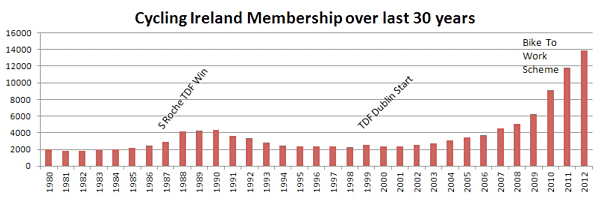
The first upturn happens in 1985. Why?
Boom years 1985-1990
TV and English.
Between 1980-84 membership remains fairly consistent at around 2000. This represents the core membership below which numbers never fall. You could call this the cycling bedrock. All countries have it. The first spike above 2000 members is in 1985 when a new UK broadcaster, Channel 4, spotted an opportunity, took a gamble and started covering Le Tour in 30 mins slots every evening. Cycling and TV are the perfect combination - suddenly there’s a spike in membership.
LeMonde was the first native English speaker to win the TDF in 1986 - coinciding with C4 coverage. We get the experience first hand, straight from the horse’s mouth not via an interpreter or captions. Making the experience more immediate and tangible. LeMond was quickly followed by Roche, then LeMond’s comeback. Over the span of LeMond’s TDF wins, membership doubles. (From 1986-2012 native English speakers have won the TDF 13 times (ok minus 8 but we’ll get to that). 50% of TDF winners have been native English speakers in that time. This can’t be ignored.)
Bust years 1991-2001
Drugs and drama
We all thought of road racing as a gritty realist documentary. Hinault blowing up on Superbagneres, Roche collapsing at the top of the La Plagne. Fignon folding on the Champs. However, drama dried up as Indurain terminated his was to 5 straight wins at Le Tour in the dullest fashion imaginable. The lack of a native English speaker mixed with the increasing stench of doping began to see an effect on cycle growth. Cycling was a switch off. Festina showed us all that gritty realism had been replaced with big budget special effects. Pro cycling was and has remained a mess ever since.
During the Indurain era membership steadily declined and failed to recover for the next 5 years. Even with Pat McQuaid at the helm of Cycling Ireland from 1996-99, the ship failed to turn around. Even securing a TDF start in Dublin didn’t have much success in raising membership nationally. By 2001 cycling was clearly back to square one.
Failure baked in.
Cycle clubs are made up from very hard working volunteers, badly funded and de-motivated by poor management and a lack of support/funding by their national federation. Most creative, innovative thinking gets driven out at this early stage.
National federations are made up from hard working volunteers, badly funded, badly managed and largely demotivated by poor management and support from the UCI.
National Federation members eventually reach top table at the UCI and eventually we get a president, Pat McQuaid. You can’t really complain when we end up with Pat McQuaid - the culture guarantees a lack of imagination. I’m not blaming the people - far from it, I’m blaming the system. It’s a system that weeds out innovation and imagination at the grassroots. To quote LBJ it would be much better ‘having them inside the tent pissing out, than outside the tent pissing in”.
THE BOOM 2001-2013
Innovation. Imagination.
Whilst pro-cycling was busy disappearing up its own backside - American bike enthusiasts with time on their hands and little regard for road racing, rules or the UCI had been racing old cruiser bikes down the sides of mountains in the late 70s. They were innovative, risk-takers some of them turned out to be savvy business people. In 1980 Specialised launched the Stumpjumper. Disc brakes, suspension, high gearing, rapid-fire shifting followed. Whilst road bike sales were dropping off a cliff, the technology and innovation going into MTB was driving a market and a sport that the UCI had no hand in and no means of controlling. The USA began outsourcing to Asia and inevitably MTB production moved to Taiwan. Eventually these innovative, entrepreneurial Taiwanese companies began producing their own bikes and developing their own brands.
In 1997 Giant (Taiwanese bike company) spotted a huge gap. Road bikes were always a tailor-made Saville Row affair, bespoke, expensive, exclusive, elitist. Giant, following the MTB model, simplified sizing giving us off-the-peg S M & L. You could now do the research, buy a bike on-line and get it delivered to your door. No need for a club or a bike shop or the UCI. Decades of innovation, unhindered by the UCI, coupled with the internet, easy credit and bikes now costing less than £1000 off-the-peg kick-started road cycling again. Look at the graph in that light.
The Elephant
Yes - it’s Lance Armstrong! He was spotted by innovative, risk-taking business people with no regard for the UCI or its rules & regulations. We couldn’t get enough of the yellow wristband, the Livestrong logos, the books and the quotes. It’s now emerging the UCI was not only on the Gravy Train but actively stoking it. Armstrong generated more bike sales, more TV coverage, more column inches and more UCI licenses than was ever thought imaginable. Look at the graph in that light.
Fat blokes in Lycra.
What to do with the dreaded ‘leisure’ cyclist (that’s what CI call them). The UCI wants champions not fat middle aged blokes in Lycra.
Give them the odd ‘reliability run’ a few ‘leisure tours’ that’ll keep them happy while we get on with the serious stuff, developing champions.
Not happy with this, innovative club members with a head for marketing and a desire to encourage more people to cycle, turned tired old ‘touring’ events and ‘reliability runs’ into Grand Fondos and Sportives inspired by the French and Italians. Sportives are a phenomenon, once again not of the UCI’s making and outside their control.
The awful phrase ‘leisure cyclist’ is still used. It’s patronising, snooty and ignores the largest cycling demographic.
Fat blokes in lycra who rode drop-bars as kids in the 70’s have saved the Cycling Ireland/UCI’s bacon not Brad and Vino. Statistics from one of Ireland’s largest Sportives show that 75% of cyclists taking part are not members of the UCI. Potentially 75% of the million roadside at the Olympic road race have no idea what the UCI is/does.
The future champions will be the sons and daughters of fat blokes in Lycra.
Stop creating - start curating.
The UCI’s biggest problem is that cycling is now awash with creative people - all outside the tent pissing in. Creating new clubs, new products, new bikes, new bike shows, new web platforms, new clothing ranges, new magazines (with old journalists digging up older dirt), new race formats and new races. The UCI are terrified the ‘next big thing’ is going to happen and they won’t control it.
What the UCI and most of us fail to realise is that Cycling isn’t sport, it’s art. Digging out Rule 1.2.019 is akin to announcing (in an Irish accent) “There shall be no more movements in modern art without running it past us first - we don’t want another Picasso on our hands!”.
Cycling is an art form with many ‘movements’. One day racing is a ‘movement’ and Paris-Roubaix is its masterpiece. Stage racing is a movement and the Tour De France is its masterpiece. Cyclocross is a movement. Mountain biking is a movement. BMX is a movement. None of them created by the UCI. Masterpieces can be revisited countless times and still deliver a new experience, that’s what these great races do - deliver something new every year. Rather than think of themselves as ‘creators’ of events they should see themselves as ‘curators’ of a rich cycling heritage. They are the Tate, The Guggenheim and MOMA rolled into one. Their business isn’t creating art it’s protecting it, promoting it and nurturing new movements. Until the UCI realise their job is not to create but to curate they will continue to make a mess of it.
The UCI are not going to develop the next big thing, they never have, it’s not their job. That job belongs to cyclists, wanting to create something different, something better and something new. Let them do the creating. That’s why cycling is art, that’s what makes it different.
An old institution bolts the door, Dungannon, Co. Tyrone
@PaulMasonNews is Newsnight's Business Editor. He's not a wonk, an ex banker or an academic. This is his great strength. It seems to enhance his ability to convey all this mumbo jumbo to the average Joe.
The only flaw was that they were allowed to feather their nests from the Golden Goose they'd been charged to look after.
Meltdown opens in mid September 2008 with the intensity and pace of an James Elroy crime thriller. Banks are beginning to die and Mason introduces a list of high rolling, low profile characters who may be connected. Men who, before 2008, were largely unknown outside a world where Wonks pour over financial reports and government papers.
Hidden banking systems are revealed, systems seemingly unknown to the banks themselves. Events happen at rate even 24 hour media coverage is failing to cope with. Each night Mason's Newsnight report becomes more panic stricken and bemused than the previous. This is the background to the opening chapters.
The unthinkable had begun to happen as bank after bank goes under. The British banking system is hours away from collapse. A phrase that sounded apocalyptic but at the same time banal. No one really had a grip on what that meant. No one had ever stopped to explain what that would actually mean because no one thought it could ever happen.
Essentially it would mean that the money in your bank account would simply disappear - pooof! Gone. Go to the hole in the wall and nothing! Quite literally nothing would come out - anywhere, everywhere. It only reappeared because the government dug into our pockets and handed it all over to the banks. That's called 'refinancing' in financial terms. I've learned loads of these phrases over the past few years.
Economist after economist appeared on TV like half-baked football pundits trying to predict the result between Barcelona and Preston North End. Each one failing miserably. The form book had gone. No one had the faintest clue what was happening or going to happen.
Someone must be to blame and Mason begins gathering the evidence and rounding up the suspects. Ben bernanke. Alan Greenspan. Hank Paulson. Fred Goodwin. These are the men who ruled the world because the government let them write the rules. The Dickensian named Bernie Madoff (pronounced "Made-off”) and Dick Fuld (pronounced "fooled"), Lehman's boss, borrowed over 40 times what his bank had on the books, ultimately leading to his staff vacating their offices, carrying their working lives in cardboard boxes.
These were the men government gave free hand to run their banks and institutions how they wished. The reasoning - they had a self interest to make their banks run efficiently, if they didn't they'd be out of a job and their banks would go bust. The only flaw was that they were allowed to feather their nests from the Golden Goose they'd been charged to look after. They didn't kill it with one blow, instead they plucked away for 25 years until all that was left was a shrivelled carcass.
During 2008 bewildering phrases began raining down like shrapnel - credit default swaps, sub primes, leveraging, quantative easing, strange techy financial lingo that has now bizarrely settled into everyday conversation. Economic Correspondents morphed into War Correspondents, predicting the fall of nations & the death of Europe usually clad in a flak jackets and helmets in front of blazing riots.
As Meltdown reaches chapter 5, it becomes clear that it's not so much an Elroy "Whodunit" more an elaborate twisting Murder on the Orient Express. Yes bankers were at fault. Yes capitalism is guilty. Big government is guilty. Globalisation is guilty. But also anyone who ever maxed out their credit card. Anyone who "leveraged" their house to buy that second house. Anyone who took the 'bribe' and voted their cosy building society into a reckless compulsive gambling bank. In some way we all lined up and stuck the knife in - we all had motive - greed.
Mason, whose politics are firmly on the left (did he really write an opera about the Miners Strike?) doles out some fierce, well deserved, well directed criticism in the final chapter. The trouble is - it's not coming from a Wonk or a Head of finance, Hedgie or Aacademic. Mason's opinion probably won't account for a hill of beans in a world where boom follows bust as night follows day. Where unchecked Capitalism bonded to unchecked human self-interest can only ever lead to one place.
The book's sub title "The End of the Age of Greed" is a statement rather than a question. Here's hoping.
Banker gets shoes shine in Leadenhall Market, London.
I saw Google celebrating Dizzy Gillespie's Birthday a few weeks back. It was surprising I suppose, as he seems to have been largely forgotten. The popularisation of black american music and more importantly culture more or less starts with Dizzy Gillespie.
If Google really wanted to honour him they'd have placed a small MP3 clip beneath his image.
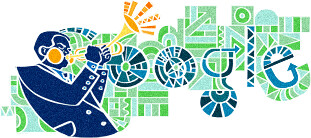
Louis Armstrong probably softened up the ears of a mostly white middle class but Gillespie took jazz to a whole new audience and similar to Hip Hop, BeBop was as much about style as music.
BeBop is hard going, it can be a hurdle most people never overcome. When faced with the breakneck speed, odd harmonies unhummable melodies, most give up at the first. It can be dense, frenetic, relentless and extremely sophisticated, as the best Hip Hop can, so in order to have caught on in the way it did it needed more access points, more hooks. Gillespie supplied all the hooks.
It was the photos of the beret, horn-rimmed glasses, goatee beard and suits that initially made you sit up and take notice. The style was more or less imported from trips to Europe (France) and it was this re-exported style that the Europeans latched on to. Anyone could 'look' like DIzzy Gillespie because you definitely were never going to sound like him.
In the early 50s he was pictured with the bottom button of his shirt undone, by chance. After it was printed, the 'beeboppers' began leaving their shirts partly undone. He pioneered the 'crumpled look', again by chance, when forced to sleep over night on busses between concerts he'd show up on stage with his suit in a mess. Because his music was so meticulous and virtuosic the devotees assumed he'd applied this to every aspect of his appearance, assuming a profound meaning behind everything he did.
The bullfrog cheeks and the trumpet pointing to the heavens are the things he'll be most remembered for rather than the earth shattering music he pioneered. If Google really wanted to honour him they'd have placed a small MP3 clip beneath his image.
DIZZY GILLESPIE - Bebop
Dizzy Gillespie announced his candidacy in 1963
How many books does one person need - at any one time? I reckon probably less than 50. That includes cook books, design books, novels, travel books, language books etc. I mean if I'm stuck I can have any book on my desk within 48 hours.
moving them on to a better home, not in the Sarkozy style but with respect and a bit of a send off
The same goes for music. I can't remember the last time I actually handled a music CD - probably not for about 2 years. I usually read a book twice - tops, unless it's a handbook or manual. I'll upload a CD or go to Spotify. So rather than them gathering dust on my measly little 150cm shelf, I think I should be letting them go, moving them on to a better home, not in the Sarkozy style but with respect and a bit of a send off. So I now declare the 10on12 store open. I'll keep the choice to 5 (for now) and offer up my best stuff, mostly books and CDs for now - so keep coming back for a look. Here's the first 5 from my short shelf.
THE HUSTLER - Walter Tevis, SOLD.
 It's about winning and losing and the price you're willing to pay to become a winner. The battle between youth (Eddie) and experience (Bert). We equate winners and losers to sport, which is why The Hustler is sometimes cited as the best sporting book ever written. Both book and subsequent film centre around the same pivotal points, how to spot the opponent's weakness. Here's the dialogue from the film (it's much more succinct) as Fast Eddie is pummeling Minnesota Fats in an 18 hour pool marathon.
It's about winning and losing and the price you're willing to pay to become a winner. The battle between youth (Eddie) and experience (Bert). We equate winners and losers to sport, which is why The Hustler is sometimes cited as the best sporting book ever written. Both book and subsequent film centre around the same pivotal points, how to spot the opponent's weakness. Here's the dialogue from the film (it's much more succinct) as Fast Eddie is pummeling Minnesota Fats in an 18 hour pool marathon.
EDDIE (to Fats) “I'm the best you ever seen, Fats.
I'm the best there is. Now even if you beat me, I'm still the best!”
Eddie walks over to the water cooler.
BERT (quietly, to Fats)
“Stay with this kid. He's a loser.”
BITCHES BREW - Miles Davis, SOLD.
 It's Miles Davis' biggest selling record. God knows why, because it's probably his most impenetrable. This 2 disc set was pieced together by Teo Macero from 3 days of recordings, or directions as Davis called them. It's cut and paste on an unimaginable scale considering it was all done by hand.If you listen to the full box set of the original material, released about 10 years ago, you'll understand the monumental feat of audio engineering that happened. I bought the remastered vinyl when I was 16 and from the off Bitches Brew was a challenge, it's unlike anything before or since.
It's Miles Davis' biggest selling record. God knows why, because it's probably his most impenetrable. This 2 disc set was pieced together by Teo Macero from 3 days of recordings, or directions as Davis called them. It's cut and paste on an unimaginable scale considering it was all done by hand.If you listen to the full box set of the original material, released about 10 years ago, you'll understand the monumental feat of audio engineering that happened. I bought the remastered vinyl when I was 16 and from the off Bitches Brew was a challenge, it's unlike anything before or since.
HOW TO BE A DESIGNER… - Adrian Shaughnessy, SOLD.
 I bought this when it first came out as I was going out on my own. As I've always found in life, the only way to truly learn something is to go through it. Most of it I had experience of already but there are lots of good insights, especially on working freelance and alone.In fact one of the best pieces of advice is "never work alone". The more people you have to bounce ideas off the better. You don't necessarily have to employ someone, just have a sounding board.
I bought this when it first came out as I was going out on my own. As I've always found in life, the only way to truly learn something is to go through it. Most of it I had experience of already but there are lots of good insights, especially on working freelance and alone.In fact one of the best pieces of advice is "never work alone". The more people you have to bounce ideas off the better. You don't necessarily have to employ someone, just have a sounding board.
THE GOLDEN AGE OF ADVERTISING - THE 70s - Jim Heimann, SOLD.
 It's the decade I was born into and some of these images still seem really exciting, especially the toys and the technology. The copywriter was still king as most of the work is still very verbose but you have to remember that this was the big medium at the time, TV advertising for most companies was still a luxury, so you had to pack a lot of information into your allotted space. Loads of inspiration, lots of it tongue in cheek and a decade where sex still sold.
It's the decade I was born into and some of these images still seem really exciting, especially the toys and the technology. The copywriter was still king as most of the work is still very verbose but you have to remember that this was the big medium at the time, TV advertising for most companies was still a luxury, so you had to pack a lot of information into your allotted space. Loads of inspiration, lots of it tongue in cheek and a decade where sex still sold.
GRID SYSTEMS - Kimberley Elam, SOLD..
 Not Muller-Brockstone's concrete flagstone that is "Grid Systems" but a smaller, more approachable text. The web's a awash with "grid system"s at the minute but anyone who has worked in print will need no introduction. All newspaper and magazines have employed them for near on 100 years. This book doesn't get hung up on the mathematics of constructing a grid but focuses is on how to arrange elements within a grid - type hierarchy, horizontal, vertical & diagonal composition. Some really nice examples with acetate overlays.
Not Muller-Brockstone's concrete flagstone that is "Grid Systems" but a smaller, more approachable text. The web's a awash with "grid system"s at the minute but anyone who has worked in print will need no introduction. All newspaper and magazines have employed them for near on 100 years. This book doesn't get hung up on the mathematics of constructing a grid but focuses is on how to arrange elements within a grid - type hierarchy, horizontal, vertical & diagonal composition. Some really nice examples with acetate overlays.
All these items are available in the 10on12 store. Click the button at the top of the page.
Bookstore on North St. Belfast.
I read somewhere that David Bowie was the cause of the credit crisis. Personally, I never forgave him for "Never Let Me Down", the banking crisis pales next to that turd.
Duchamp's greatest achievement was that he "never had to work for a living".
I was talking to a friend about the ways to spot the next financial bubble, what are the tells…the stuff to look out for, so we can sell our houses at the height and retire in splendor. The Dame released his bonds in the late 90s, The Prudential snapped up £55 million, Moodys rated them AAA, the Napster came out a few years later and they dropped to Junk status. The thing is, there's form with this, there's a trend. Bowie might think he was the first artist to 'securitise himself' but another planted his flag/urinal there long before him.
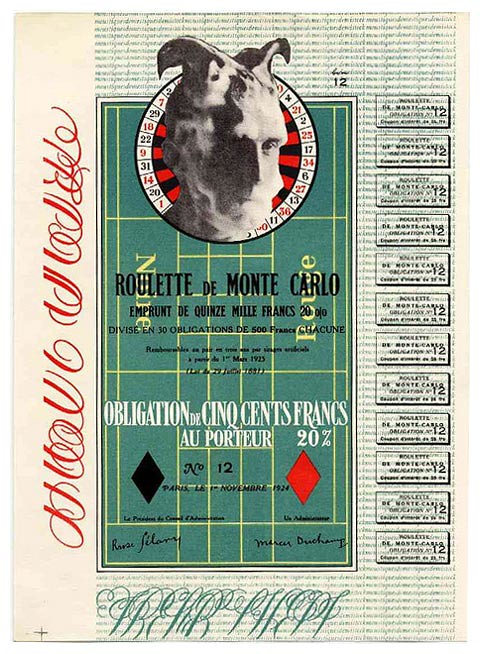 Monte Carlo Bond
Monte Carlo Bond
In the early 1920's, Marcel Duchamp, obsessed with mathematics, devised a system to clean the casino's in Monte Carlo, as much a publicity stunt as a serious attempt (as opposed to Bowie's blatant cash grab). So he printed 300 bonds, bearing his soaped up head with hair pulled into 2 horns. Each to the value of 500 francs and each one claiming to return 20%. It's all sounding very familiar.
They were issued on the 1st November 1924 and endorsed by the Board of Directors, Rose Selavy (Duchamp's pseudonym). He managed to find 2 investors and made off to Monte Carlo's roulette wheels with the 'investment'. He neither won nor lost, which for him was the "peak of financial success".
"If one perseveres long enough one can hope to win an amount equal to the wages of a clerk who works in an office as many hours as the gambler works in the casiino."
5 years later was the wall street crash.
So I'm waiting for the Lady GaGa issue in 2020, I'll be getting on the blower to the Estate Agent and I'll have the boards up that afternoon!
It's that little section you see on websites, pioneered by Amazon. In a way it pigeonholes you, recognises you as a certain type of person, 'if you like that then you'll love this!' type of thing.
Probably most disturbing is the fact that there are 3 second hand copies available…
My kids eat those little yoghurt pots by the dozen. They're too small to satisfy so they end up scoffing about ten of them. A while back I got a load of old lolly moulds, (the type you make yourself with real juice) I removed the lids from the yoghurt pots and slotted in the stick part... so now I have loads of little yoghurt lollies. The kids love them and can only ever manage 1. Over the space of last year the sticks got scattered to the four corners of the townland, so I had to find more.
So I'm searching for lolly makers on amazon to replace them. I found exactly what I was looking for and headed down the page to read the reviews. On the way down the page I saw the little scrolling carousel, recommending other products that people bought along with the lolly moulds. It's similar to the conveyor belt on the Generation Game. Lots of loosley related items whiz past you
'OK my Love tell me as many items as you can remember starting from… now!
OK Bruce - The Igglepiggle DVD, the bag of 100 wooden lolly sticks, Charlie and Lola Box set, The Little Book of Wanking, Indianna Jones Videooooooooooooooooo!

Yes that's right, people who make home made lollys also like "wanking". This is what happens when you have an algorithm as opposed to a human being making these suggestions. The program doesn't see the child sitting on your knee as you scroll through the suggestions, it's just given an instruction and off it goes.
Of course I clicked on it to see if it was for real. It was, and it had a few glowing reviews.
"This book has improved my wanking 1000%. I am now deaf, blind and insane but very very happy! "
As well as a few irate browsers:
"I do not advice any one to buy this book at all. I do not want to give it even one star but I can not preview this without it."
Probably most disturbing is the fact that there are 3 second hand copies available!!!!!!!
Errrr........... those lollys should be ready round about now.
Going through the book shelf again. Just a small gardening book that I picked up years ago for a few pence, again for the illustrations more that the prose. It's only now, after gardening for a number of years that I fully appreciate the text.
The illustrations, over 50 of them, are simple, playful, full of life and humour.
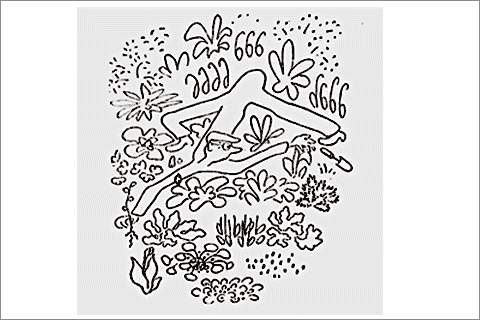
The book was written in 1929 shortly before the Nazis came to power.
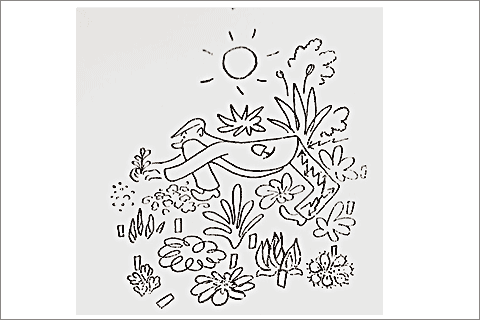
The illustrations, over 50 of them, are simple, playful, full of life and perfectly match the text.
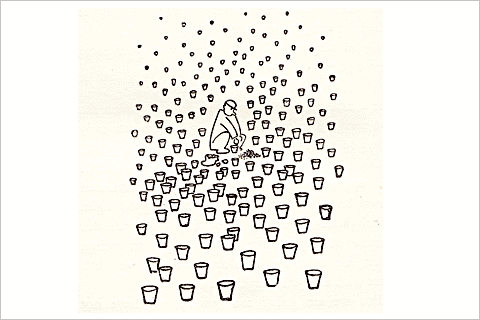
Written in 1929, translated into English in 1931 and published by George Allen & Unwin Ltd, Museum Street, London.
Both brothers were fiercely anti Nazi and very outspoken. Josef died in Bergen-Belsen concentration camp in 1945.
© Karel Čapek, Josef Čapek.
At some stage in life you're going to have to face up to the big question. Do you pander to the whims of a 5 year old and cut them off, or do you force the wee shits to 'eat their crusts'.
Approximately 20 loaves a year… wasted. Work that out over the entire lunch eating population and you have an Everest of dough.
Recently I got caught up in the whole crust debate. I make the lunches for two of my kids every morning. To hear a 5 year old demand that the crusts be removed sort of makes the blood boil, well maybe not boil but there's certainly a warming of sorts. “When I was your age I ate my crusts and was glad of them”, but truth be told I never ate them. I simply repeat what my Dad barked at me.
I hated them. All kids hated them. No one ate their crusts. What could possibly be the appeal of burnt, charred dough anyway. It must be like oysters and olives, as you get old you palate either gets more refined, that or you just turn into a slob and you'll eat just about any old muck.
Each day a pattern began to form. I make the lunch, crusts firmly attached to the rest of the slice, pack them in the lunch box and place in the schoolbag. Home comes the lunchbox full of half eaten sandwiches. After a while I wondered if they simply weren't hungry enough to eat all the sandwiches or were crusts really so toxic to children? So I tried a few days with crusts off. Home came the lunchboxes completely spotless, licked clean and crying out 'please sir can I have some more'.
So I began wondering how much bread, good bread, is actually wasted by keeping the crusts on. In the UK 6.7 million tonnes of food is thrown away each year. Maybe by cutting the crusts we can cut the waste. It sounds counter intuitive, but here's the science.
Here we have two sets of sandwiches, pre-lunchboxed. The left has crusts attached. The right has the crusts removed, cut as thinly as possible so as not to waste the good bread. The wastage from this surgical crust cutting was 18g.
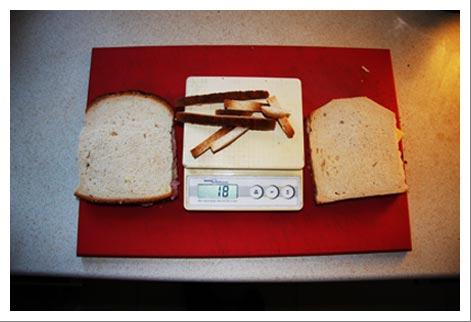
Four hours later the lunch boxes arrive home again. As I suspected the left box comes home full of 'toxic waste', the right crying out for 'more'.
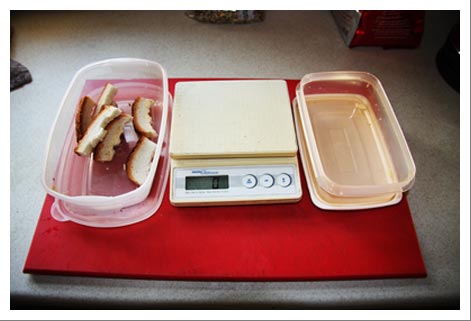
The offending articles are weighed.
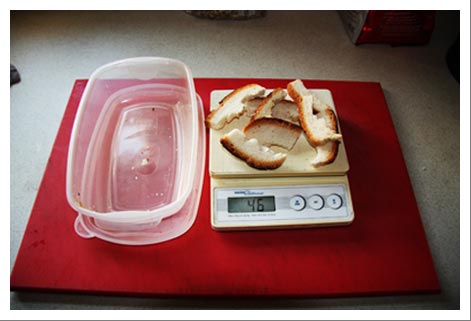
Forget Al Gore and his Inconvenient Truth, this is the real inconvenient truth. A full 28g of inconvenient truth. Truth that a 5 year old might have the key to unlock global warming!!! Ok, maybe I'm taking it too far but here's the thing. I've two kids. That's been 28g x 2. 56g of bread every day. 280g a week. That's a loaf and a half a month. Approximately 20 loaves a year… wasted. Work that out over the entire lunch eating population and you have an Everest of dough.
So the next time your child asks you to cut the crusts, don't treat them like some bourgeois brat. Thank them for their insight… and get cutting.
In a box on a shelf sits 3 cameras. An Ensign Ful Vue, a Brownie and a Canon Canonet. Combined age about 120 years, all still functioning, In another box sits 3 state of the art digital cameras, all Canon, combined age about 8 years, all broken.
To lose one camera, may be regarded as a misfortune; to lose 3 looks like carelessness.
I was under the impression digital was going to make photography cheaper. After spending over £1300 in 6 years suddenly I'm not so sure. I reckon £1300 would get me a classic 35mm camera and enough film to keep me going for 6 years. It might get me as many results as well, without the endless crud I seem to accumulate with a digital.
Before digital I'd gotten totally out of the habit of using the camera. I enjoyed it but simply hadn't the money to really indulge in it. Over the years the SLR got used less and less. Then I bought a IXUS V3. Not only a beautiful thing to hold but it was a self contained unit. It took the picture, developed it and showed you the result in an instant… I was off, click click click click. An orgy of photography ensued. Rain on the window. The accumulated lint in the tumble dryer. Cut carrots. The underneath of my fingernails. Tarmac. A blade of grass. The inside of a toilet roll tube. Tinfoil. It was only a matter of time before Magnum came calling!
After 2 years up popped E18 on the display. Lens refused to go back in. Camera was out of warranty and was too expensive to get fixed, besides, I'd out grown it. I wanted to shoot RAW, get more pixels and a faster, wider lens. I splurged another £400 on a S70. What a camera! RAW files. Incredible wide lens. Snap mode. Another orgy of photography. Each lunchtime was spent with the camera. Each break was spent processing, editing and uploading. I was on a real roll for about 18 months then… E18 - Lens Error. To paraphrase Oscar Wilde, “To lose one camera, may be regarded as a misfortune; to lose both looks like carelessness.”.
The problem is, I wasn't careless, I look after my gear. The carelessness is Canon's fault, for building equipment that simply can't last. If you're going to install a silly 6x zoom lens, then develop motors that won't burn out/clog up in 18 months. Do that or stop fitting ridiculous zoom lenses in the first place. So I was in quandry, to buy another camera, another Canon or not. The G9 came out shortly afterwards. I saw the silly, big, fragile looking zoom lens but the camera did look solid. Some nice features. Well built. Nice ISO dial on top. It had no competitor. I thought I'd give them one last try only this time I had a sure fire plan.
I bought a Lensmate and grip. The lensmate was attached to the camera 24/7 so the lens would have 100% protection. I fitted a lens cap to the lensmate. I bought a couple of Crumpler bags. 1 bag for the camera and a larger bag to hold that. The sort of photographs I was taking by this stage were all street. This means that I wasn't using any zoom at all, simply getting as close as I could to the subject. I was also using snap mode, which meant that the lens wasn't even autofocusing! The only action the camera had to perform was pop the lens out, open the shutter and retract again. What could possibly go wrong?
E18 Lens Error! That's what could go wrong. Only it seems Canon have dropped the E18 as it has now become synonymous with Canon. It seems if you own a compact Canon, chances are you're going to be introduced at some stage. (Did I mention that the automatic lens covers scraped the front of my lens as well, there's me thing they were supposed to protect it?)
So here I am, yet again, no camera and more than a tad miffed! Only this time Canon has competitors. A lot of competitors. Most have now cottoned on to the fact that an old style rangefinders with interchangable lenses have huge appeal. The 4/3 system is starting to gain momentum and even Leica seem to be lowering the bar slightly, albeit with a zoomer.
So, for now, I'm afraid it's good bye Canon. It's been interesting, sometimes rewarding but ultimately expensive, frustrating and disappointing.
Update: Christmas '09: I sent the cameras back to Canon. The fixed the G9 E18 error and replaced the scratched lens. FREE! as a "goodwill gesture"! It'll keep me going for another while.
Man Ray's photograph has been described as one of the most enigmatic images of the 20th Century. A conundrum, a masterpiece but behind the photograph lies neglect, mathematics, a chocolate grinder and probably a game of chess.
Duchamp and Man Ray were old friends and collaborators. They were also avid chess players. Plotting, predicting, scheming, keeping one step ahead of the other.
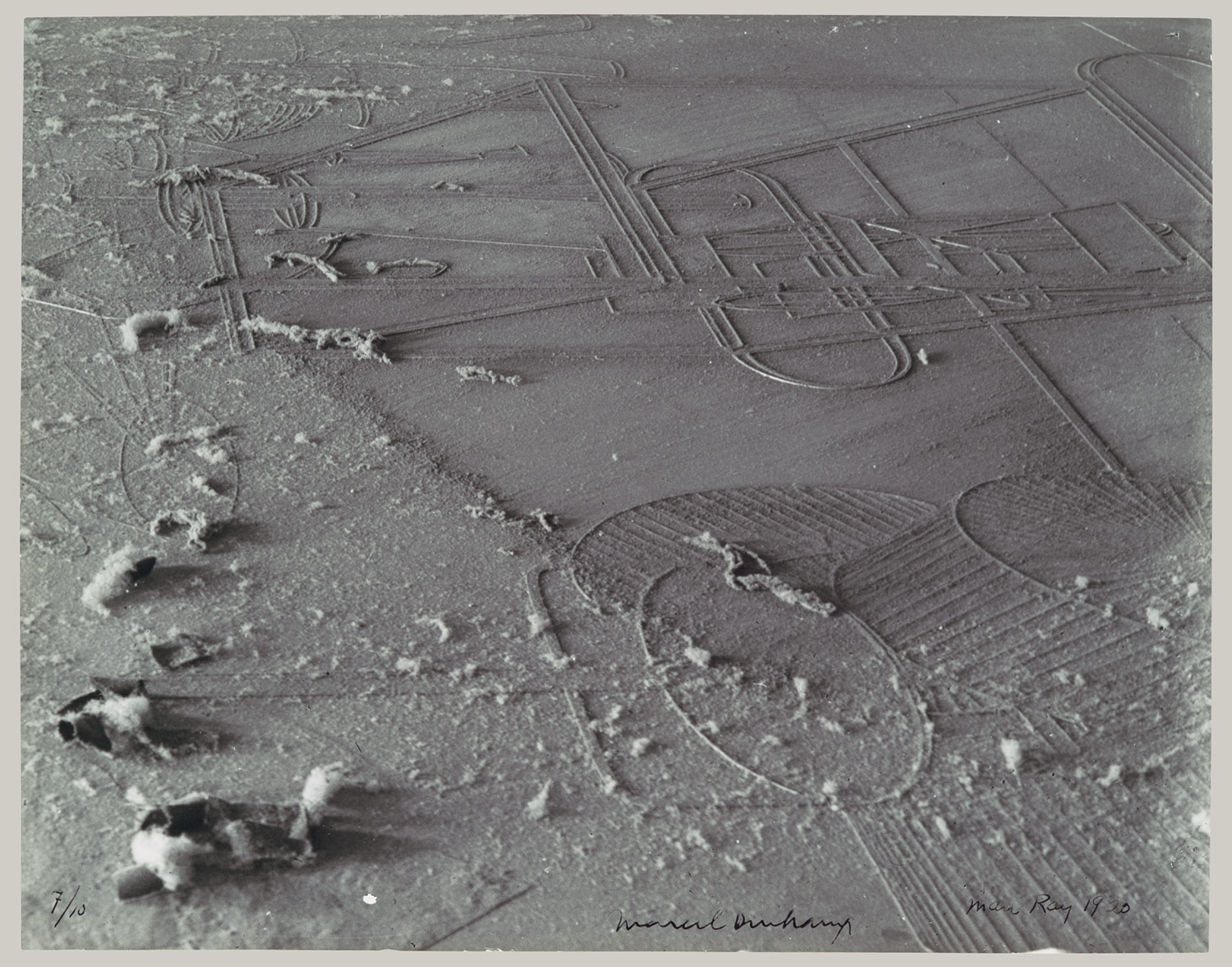
Printed in books countless times over the years, I've usually scratched my head and tried to figure out what it was exactly. In every description I've read the photograph sounds so deliberate, so meticulously planned that it has taken on this mythical status. It's always compared to an alien landscape, a moonscape populated by mysterious, deserted architectural ruins. What gives the image this supernatural quality are the strange radiating geometric lines in the top right side of the frame. It gives the image its scale. The amassed dust creating an intriguing contrast to the crystaline landscape it envelops. Not until I read a fairly detailed book on Duchamp's “ Large Glass” did I piece it all together, well my version of it.
Duchamp and Man Ray were old friends and collaborators. They were also avid chess players. Plotting, predicting, scheming, keeping one step ahead of the other. Duchamp more so, dedicating many years to tournament playing.
Duchamp had previously invented his own language which drove everyone insane, devised a new system of measurement which involved dropping random pieces of string on a table (!) but now he'd become fairly obsessed with Mathematics. It sounds nerdy, but Mathemaics in the early 20th C was very sexy, very 'in'. Einstien was everywhere and it seemed that the answer to every conundrum was to be found in mathematics. Duchamp, now bored with painting (retinal art), decided to form mathematical theories and embark on his most ambitious work yet, to build an 'erotic machine' , The Bride Stripped Bare by her Batchelors, Even or the Large Glass.
After a few years sketching and planning he accepted he'd aimed too high and decided to scale the project back and create a 2D, flat plan for the machine, on glass, with wires, metal, varnish and glue… and some dust. The project ballooned. I suspect it quickly became a millstone. For a man who became famous for his readymades, pieces that took no physical act to create, essentially adding his name or more usually a pseudonym to everyday objects, he was now lumbered with piece that would rattle on for another 10 years. It was meticulous, mathematical, artistic and mechanical and probably a right pain in the arse but by this stage the work had become famous in its own right, no doubt there was immense pressure on to complete it, if only to sell the thing.
As Duchamp flitted across the Atlantic over the next 10 years, The Large Glass lay in his New York studio, neglected for long periods quite literally gathering dust. On one of his returns from Paris, Man Ray probably called round for a game of chess. Duchamp probably showed him the accumulated dust and brushed some off the detailed sections to show him the detail below. Man Ray opened the shutter as they set about their chess game.
The picture is taken across of the bottom half (masculine half) of the glass, (before it was smashed), the detail is the 'chocolate grinder' a flat 2D representation of a cocoa bean grinder Duchamp admired in Chocolatier's windows in Rouen. For Duchamp this represented some grinding masculine organ. Beyond that is the 'the glider' representing chance and unpredictability. Confused? So am I and I suspect so was Duchamp. These elements were created using lead or silver wire stuck to the surface of the glass with varnish. Photographs of the Large Glass always fail to capture the intricacy of the detail captured here.
After 10 long years Duchamp finally declared it "definitely and permanently unfinished". Ironically the photograph, taken over a 2 hour exposure, has become more famous than the work itself. In comparison to the 10 years The Large Glass took to (in)complete, the photograph was a virtual snapshot
Checkmate, Man Ray.
Image © metmuseum.org
Every few years Hollywood make an 'Irish film'. That's usually a cue for a re-write of history, an A-list actor with an Italian or Jewish heritage and an accent so far off target that it should come with its very own passport.
The name's Lonnigan, from across the water, you'll be O'Toole and it's right glad I am to meet ye.
The net is filled with discussions about actors who got it wrong… really, really wrong. Badly wrong. Sean Connery in The Untouchables plays an Irish cop with a Glaswegian accent so thick that Jack Charlton must have swung the Irish citizenship for him. Richard Gere failed to hit the side of the barn completely and landed somewhere off the coast of Iceland with his role in The Jackal. I'd even go so far as saying Liam Neeson's brogue in Michael Collins stinks as badly as Gere's and Connery's, and he's feckin' Irish.
But nowhere does anyone heap praise on those who got it right. Daniel Day Lewis has received 3 Oscar nominations playing Irish men, winning one for My Left Foot. Cate Blanchet and Meryl Streep both do descent jobs in fairly ropey films.
However, one man's performance towers above all others. The Naked Truth was a small British comedy made in 1957. Denis Price plays a blackmailer attempting to squeeze money from Peter Sellers. Sellers decides to blow up Price rather than pay. He disguises himself as a burly Irish man in attempt to get explosives from the IRA. He ends up in a pub in London, hoping to obtain some of the 'jelly'. "Tis the shamrock in her hair…". (The clip sometimes gets deleted by a quick search should bring it up.)
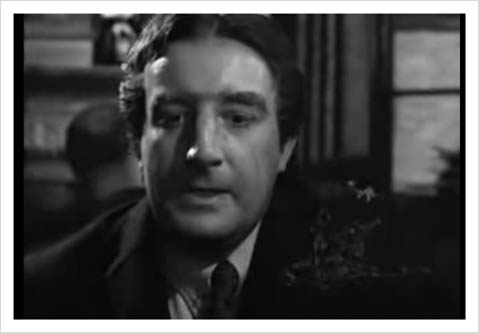
If the council of any borough, urban district, or parish are of opinion that there is a demand for allotments… in the borough, urban district, or parish,… the council shall provide a sufficient number of allotments, and shall let such allotments to persons.
There's nothing hard about it. Seeds have a tendency to grow, that's what they're designed to do.
That's taken straight from the Small Holdings and Allotments Act 1908. As far as I'm aware that still stands. Seems all you need are 6 names from 6 different rate payers in the borough. No doubt there's enough red tape beyond that statement to stretch to the moon and back but still, it looks fairly straightforward.
I've a small, I mean really small, vegetable garden out the back. I grow enough garlic for the year, enough onions for half the year and other bits and bobs gets me through the summer. Nothing outstanding but still enough to take some sense of pride in the whole thing. People visit the garden and stand a bit slack jawed as the courgettes, french beans and peas hang unpicked and unpacked. Potatoes grow in a few fertilizer bags, tomatoes in the greenhouse and herbs etc are tucked in where there's space for them. There's nothing hard about it. Seeds have a tendency to grow, that's what they're designed to do. I probably grow about 2% of our total food. It doesn't sound like a lot, but If I had more land I could easily take that to 25% with not much more work.
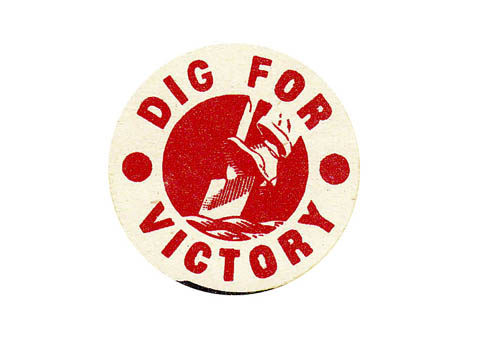
My Da always had a garden and his Da had an allotment, especially during WWII, when the Dig For Victory campaign was in full swing. Allotments were situated on the embankment of the Ballygawley Road. My Da remembers my Granda growing/bartering almost everything to feed a family of 13. In the UK, during WWII, the Dig for Victory campaign accounted for 1.5 million plots, raised land usage by 80% and halved food imports.
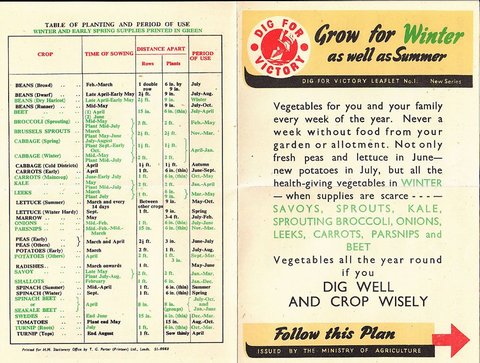
The most recent example of Urban Agriculture on a National scale was in Cuba during the Special Period. Pesticides, oil and food suddenly stopped, the USA further tightened its embargo and Cuba was facing famine. Now almost every available balcony, terrace, rooftop and derelict plot within Havana helps produce over 50% of the city's fresh fruit and vegetables. Havana has a polulation of 2.1 million.
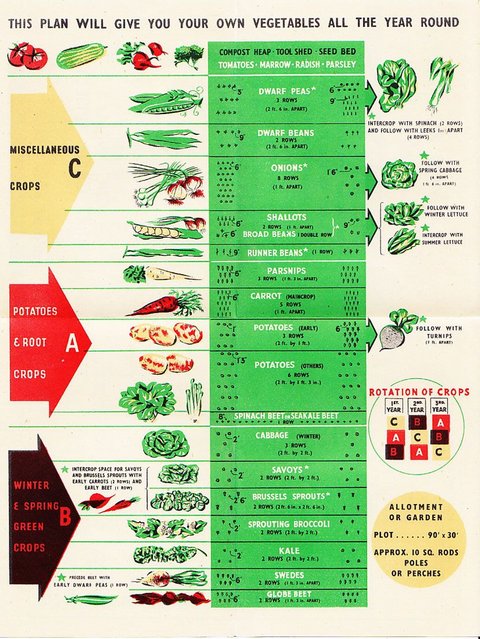
So if you fancy upping your acreage and lowering your food bill, and there isn't an allotment in your borough, contact your local council and let the red tape flow.
Dig Well & Crop Wisely.
Images are taken from an original "Dig For Victory Leaflet No.1", found in Middletons Gardening Guide 1945.
“When I look at a wildlife or nature subject, I don't see the feathers in the wings, I just count the wings. I see exciting shapes, color combinations, patterns, textures, fascinating behavior and endless possibilities for making interesting pictures”. Charles Harper.
I can almost hear Martin Denny playing on the phonogram in glorious High Fidelity Stereo…
I was a regular at Anderson's Auctions at the back of Linenhall Street, Belfast. I was after a lamp or an ashtray, or maybe it was a chair or that sauna I bought, I can't really remember but the lot also included a box of fusty medical books. They were mostly about forensic pathology and came from an old doctor's surgery.
They sat in my flat for a year or so, I was afraid to touch them. The thought of all those Victorian diseases pressed gently between the pages, ready to spring on some milky-skinned, soft, 20th century Irish man meant they were bound for the "long finger". A house move forced my hand. With the fingernails of index finger and thumb I clawed my way through the text books, dropping them one by one in a black bin liner. Before you accuse me of book burning/binning, don't bother because I don't care. I wasn't about to unleash the Black Death on an already war torn Belfast.
At the bottom of the pile was this gem, Betty Crocker's Dinner For Two Cook Book. A gem for a number of reasons. Its spiral-bound, handwritten type and simple sketches make it look like Betty Draper's dairy. The title hints to a culture moving away from family focused life. The war and rationing have ended. People are affluent, the world's gone high tech and children aren't the focus at mealtimes or any other time for that matter. In fact, children aren't mentioned at all in this book.
There's a great “exotic” section on “Foreign Lands”, I can almost hear Martin Denny playing on the phonogram in glorious High Fidelity Stereo and what's that… mmmmm mmmmm, it's the Ham and Bananas Hollandaise browning gently under the grill. Just enough time for another Scotch and some avocado dip.
Good Cook Knows
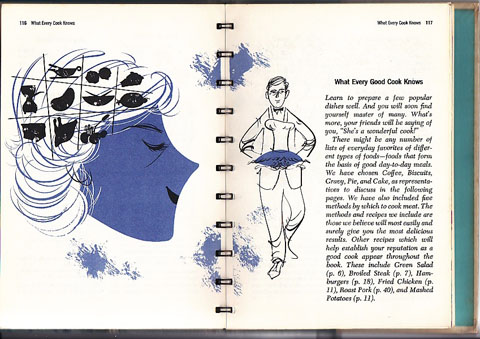
Aside from all that, I held onto the book because of the illustrations. It's simply stuffed full of the freshest, most imaginative, effortless illustration you're likely to come across. It's an inspiration every time I pick it up. The book doesn't inspire you to cook, it inspires you to draw.
It's still readily available and a 1st edition has become pretty collectable. I put this down to Harper's illustrations rather than any ground breaking culinary achievement. As chance would have it, mine is a First Edition, First Print. Auctions!
When Company Comes

Good and Easy Diners
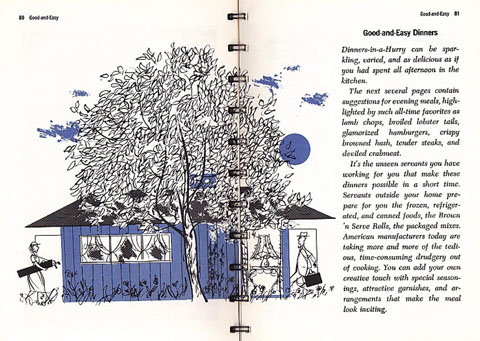
Setting the Table
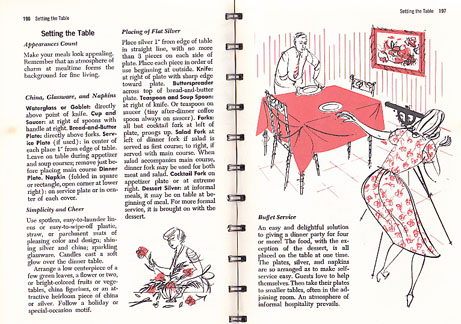
Kitchen for Two
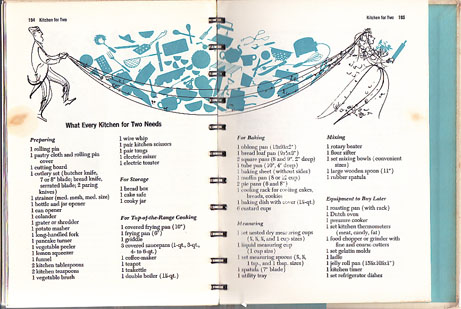
American Favourites
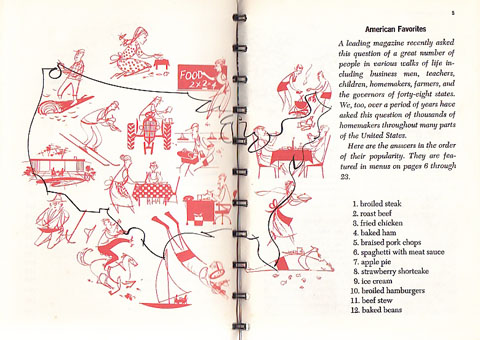
See lots more Harper illsutarions over at the flickr group.
Lord knows I've tried, but after 15 years I'm more than ready to admit defeat. You can take illustrator and shove it where the sun don't shine!
…Illustrator would take up an entire floor and have a dedicated elevator to Photoshop and InDesign on the floors above.
I say that for a few reasons, firstly I have to come out. I'm an old Freehand user. Actually I'm still a Freehand user. I use it almost every day. I know it's been officially dead for about 5 years, but it still works. It's an old friend, it's not going to make fun of me or embarrass me. I start it up and the two of us just get on with the job together.
I don't use Illustrator because it usually has to go make a cup of tea and have smoke before it decides to turn up to work. Looking at the stats it's no wonder. It sits on my desktop hogging almost 800MB of office/desktop space. If my Mac were an office block, Illustrator would take up an entire floor and have a dedicated elevator to Photoshop and InDesign on the floors above. They'd have extended lunch breaks together, leave the lights on when they went home and never empty the bins. Pesky little Freehand sits at the hot desk on the ground floor along side CSS Edit, Text Edit, Text Wrangler and Preview.
A few examples. When masking elements in Freehand you have a piece of artwork and the shape of the mask. Select the artwork and cut, then paste inside the mask, and off I go to the next task. Illustrator books an ad in the local paper and puts the work out tender. Ultimately the sub contractor has misinterpreted the spec and you get a piece of abstract art.
So I'm drawing a map and want rivers roads, text and etc on their own layer. Freehand does just that, I've all roads on 1 layer, all rivers on another and so on. Illustrator contacts the Layers department at the end of the corridor where a crack team place every item on it's own layer and because they're trying to impress the boss, create a series of sub layers for everything in that layer. So instead of 3 or 4 layers I've now got 300 of the things.
It does some jobs better, like the Trace function but not the "meat and potato" jobs. The Trace function is the equivalent to that little parsley garnish on top of the meat and potatoes, it looks nice but I'm gonna lift it and leave it on the side.
So I'm championing Freehand, it's classic app man. Like vinyl is classic music, gibson is classic guitar and Leica is classic photography. It gives you that look, sound and feel. Like film cameras, it's outdated, defunct and unsupported by that doesn't mean it's unloved.
They're bloody everywhere, lying on the floor, stuffed in jam jars, down the sofa, in the ashtray of the car, even lying on the feckin' pavement, once upon a time money stood for something.
the man charged with finding a suitable design for the new currency was none other than W.B. Yeats.
I'm not big on money, don't get me wrong, I worry about it as much as the next man but it's not the sort of thing to get me excited. On the other had it always got my Dad's heart going, not earning and spending it, but collecting it, sorting it, grading it. His brother Paddy owned a butcher shop in Carrickmore, he'd regularly go through his week's takings and sort out the wheat form the chaff, paying him like for like. At cattle markets and Ceili halls he'd spot the odd gem and throw it in the tin when he got home. Recently he decided to cash in his chips and see if it amounted to a hill of beans.
Down in the shed there's boxes, tins, jars, bags all filled with coins, possibly 20,000 or more. He randomly pulls out a round tin about 15cm high with a few hundred coins. They we're all old Irish coins from before decimalisaiton. The "old money" stayed in circulation along with the newly decimalised coins right up until the Irish Republic joined the Euro. Both Irish and British coins contained precious metal up until the mid 1940s, so for that reason alone they're collectable. I hadn't seen the coins for years, but it was almost like seeing them for the first time. No heads of state, adventurers, explorers, leaders and ground breaking scientists, a simple Irish Harp on one side and a humble farmyard animal on the other.

Of all the coins he'd collected I found these the most interesting as they represented a nation attempting to establish some form of new global brand, one its citizens could (a) identify with and (b) accept. Ireland was still raw from civil war, the famine was only 60 years past and 600 years of British occupation had begun to recede. The new money had to tread carefully and avoid rubbing anyone's nose in it while at the same time represent the entire nation.
Beyond symbolising monetary values, the new currency must easily translate the nations values abroad, this was a time when coinage was truly the mark of a nation.
I dug a bit further and found a committee was established to design and mint a new currency and the man charged with finding a suitable design for the new currency was none other than W.B. Yeats. Yeats chaired a committee, commissioning a number of artists to produce samples for the coins. Ironically it was an englishman who won, Percy Metcalfe and the Royal Mint in England forged the coins.
The Irish Harp was to feature on the reverse and common farmyard animals on the face. The animals would be embraced by the entire nation, symbolising the importance of agriculture, especially in wake of the famine, still very much in living memory.
From the humble woodcock, sow and piglets and hen and chicks, an everyday sight in Irish homes at the time, through to the salmon, bull and horse, not surprisingly on the coins of higher value. They're all beautiful pieces of art, well worth collecting not only as coins but a reminder of how far a country traveled and how its values have changed in less that 100 years. Which got us thinking, if Ireland were to mint a new set of coins, what might they look like… ?
As I embark on this new venture I'm presented with a world of possibilities. Every font under the sun, every colour imaginable, gifs, jpegs, pngs of anything I care to think of. Instead I'll temper my excitement, stick to my guns, and knuckle down for fear of another dressing down.
it arrived back like a bloody suicide note, red ink from header to footer, covered in hieroglyphics that made no sense.
I left school at 18, Margaret Thatcher was still in power and Northern Ireland was not big on opportunity. I took a years training/apprenticeship at a local newspaper. Lunch, always extended, usually included alcohol before sauntering back to the office where the atmosphere was, well… laid back. Everyone smoked at their desk, constantly. Work was a bit slap dash, law suits occurred frequently. It no longer exists, I think that speaks volumes. It was however a solid training ground and most of the people who went through it are still working in some related field.
They had the first real useable computers I’d seen, with a mouse and a GUI. It was light years away from sitting typing lines of code on a Commodore. Not only that but a laser printer spat out exactly what you saw on the screen. Most of the time it was even better than you saw on the screen as screen fonts back then were chronic. It sounds common place now but it was stunning. People sat at pasteboards (cut and paste…) with scalpels, cutting up galleys of type spewed out of the laser printer, pasting them down with prit for that week’s press. Spot colour, for that was all there was, was achieved by printing out sections onto acetate and pasting that over portions of advertising so the printer knew what to put on the ‘colour’ plate. There was no colour on the monitor, or the software (pagemaker) nor the printer for that matter, it was extremely limited in comparison to existing technology, but it was cheaper and more exciting!
Over the next few years the technology got better, faster and more colourful and I’d built up a bit of experience and also a lot of bad habits. Probably the worst habit was thinking I’d nothing more to learn, (that and putting 2 spaces after a full point).
By the mid 90s I’d found myself in the production room for the country’s school examination papers. The room was full of older men in various stages of retirement, myopia and alcoholism, crouched over pasteboards ticking, marking, scribbling, conferring, referencing, cutting and gluing. After a quick briefing where I was told “we use one font, no colour and a strict house style”, I thought “Holy shit, I’m back on square one”. I was lead to a Mac, Quark Xpress 3.0 and handed my first piece of work, type setting a straightforward marking scheme from handwritten manuscript. Simple, I thought, it’s all looks like Times New Roman so off I go bashing away. By the end of the day I’d done what I’d considered a reasonably good job, gave it a quick proof, stuck it in a job bag and went home. The next afternoon it arrived back like a bloody suicide note, red ink from header to footer, covered in hieroglyphics that made no sense. I prayed for the hole to open up. It didn’t. I sat there, staring at the bloody mess. I took a deep breath, admited I was floundering and went and spoke to “Big Eddy” Haughey, one of the older gents who sat opposite me.
”All the oul fellas are proof readers” said Eddy. Some had done it their whole lives, 40 years in some cases. Others had been typesetters in the 60s and 70s using phototypesetting and couple started life in newspapers using linotypes, technology dating back to Victorian times. They’d all worked at the Universities Press producing scientific encyclopedia, but had been slung on the scrap heap by youngsters who could operate a computer and a spell checker. I’d never thought of proofing as an actual trade, more an option on the “Edit” menu.
I showed him my copy like I used to show my mother a cut knee after riding a bike with no hands into a wall… intense pain with acute embarrassment. He looked down his nose, through his glasses and over his huge stomach at the red mess on his board. He sniffed and coughed. I flinched and winced. He pursed his lips and sucked in a room full of air and finally said… “it’s not too bad kid”. I exhaled a room full of air. He opened his drawer pulled out the style guide and a copy of the British Standard of Proof Readers Marks. He explained what the markup symbols meant and page by page I realised how little I knew about typography, about anything really. The difference between a forward slash and a solidus, an apostrophe and a prime, inches and quote marks, faux bold and Times Bold and on and on it went page after page. Every missing millimetre of indent, extra character space and typo was highlighted. Every toner blotch, paper crease and tea stain was a visual dressing down. Absolutely nothing got through the net because nothing could afford to. He finally said “listen kid, we don’t do fancy shit here, just keep it 10on12 and you’ll be just fine”. “10 what on 12 what” I said. “10 point body on a 12 point leading”, he said.
15 years later and I’m wrestling with HTML, CSS and Expression Engine. The words body, markup and stylesheet still mean much the same thing, leading has become line height, tracking is letter-spacing, ems have replaced points so I suppose it’s true, the more things change the more they stay the same. It’s laborious in comparison to print technologies, but it’s cheaper and more exciting. So I’ll keep it simple, keep it 10on12, metaphorically speaking. You don’t have to be fancy to be effective. You don’t have to decorate to communicate, stick to the basics, keep it simple and remember, experience usually trumps youth everytime.